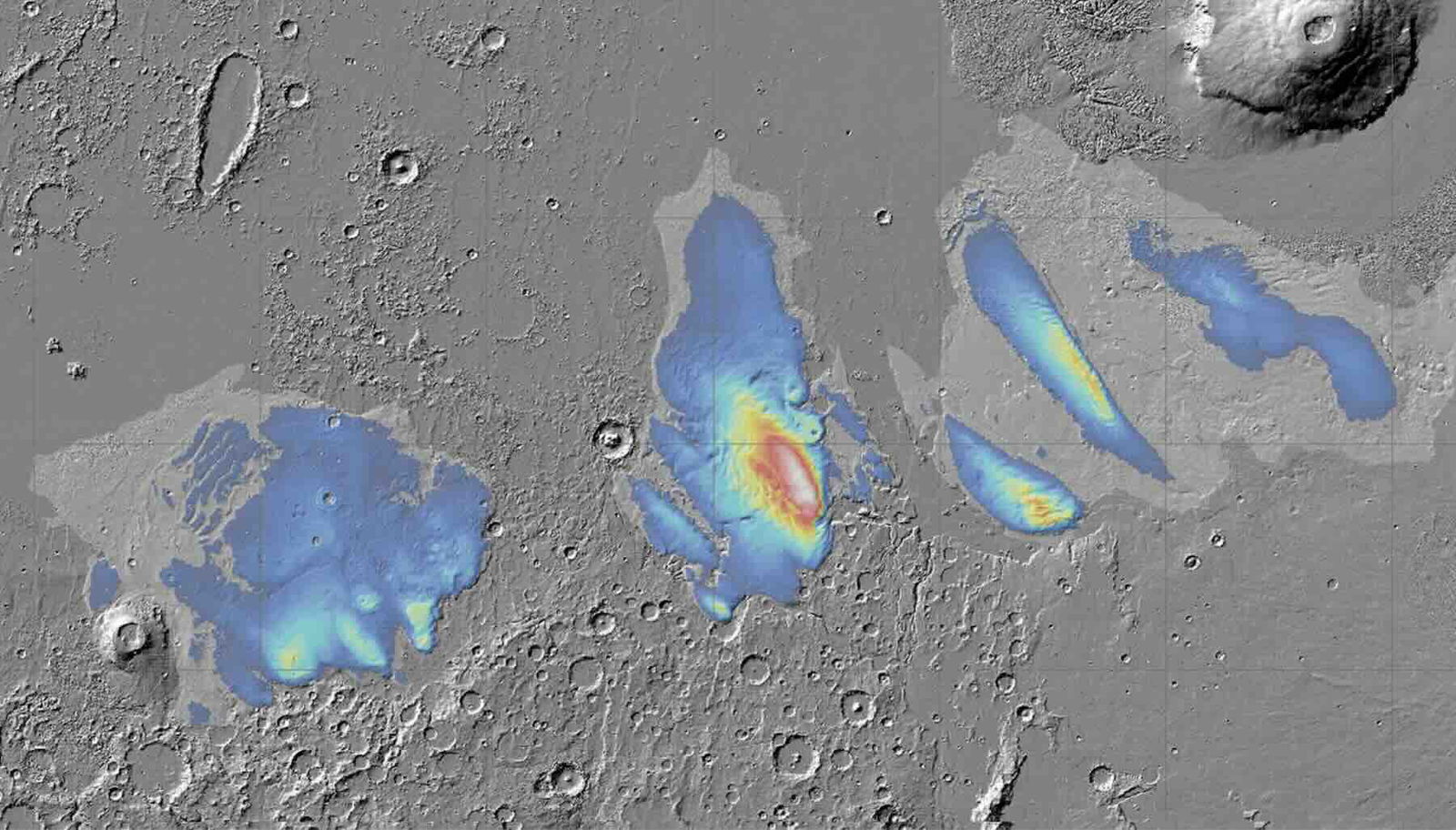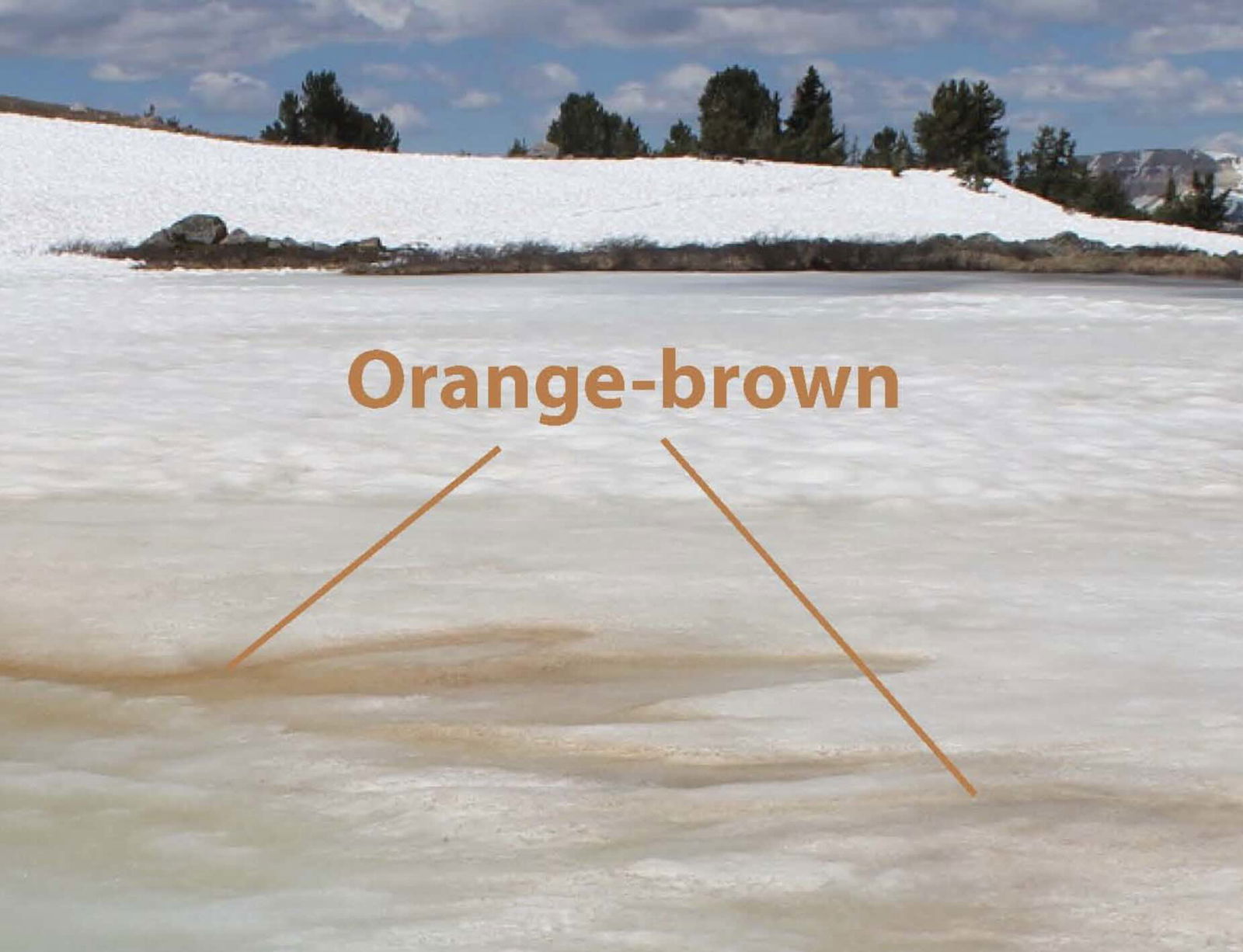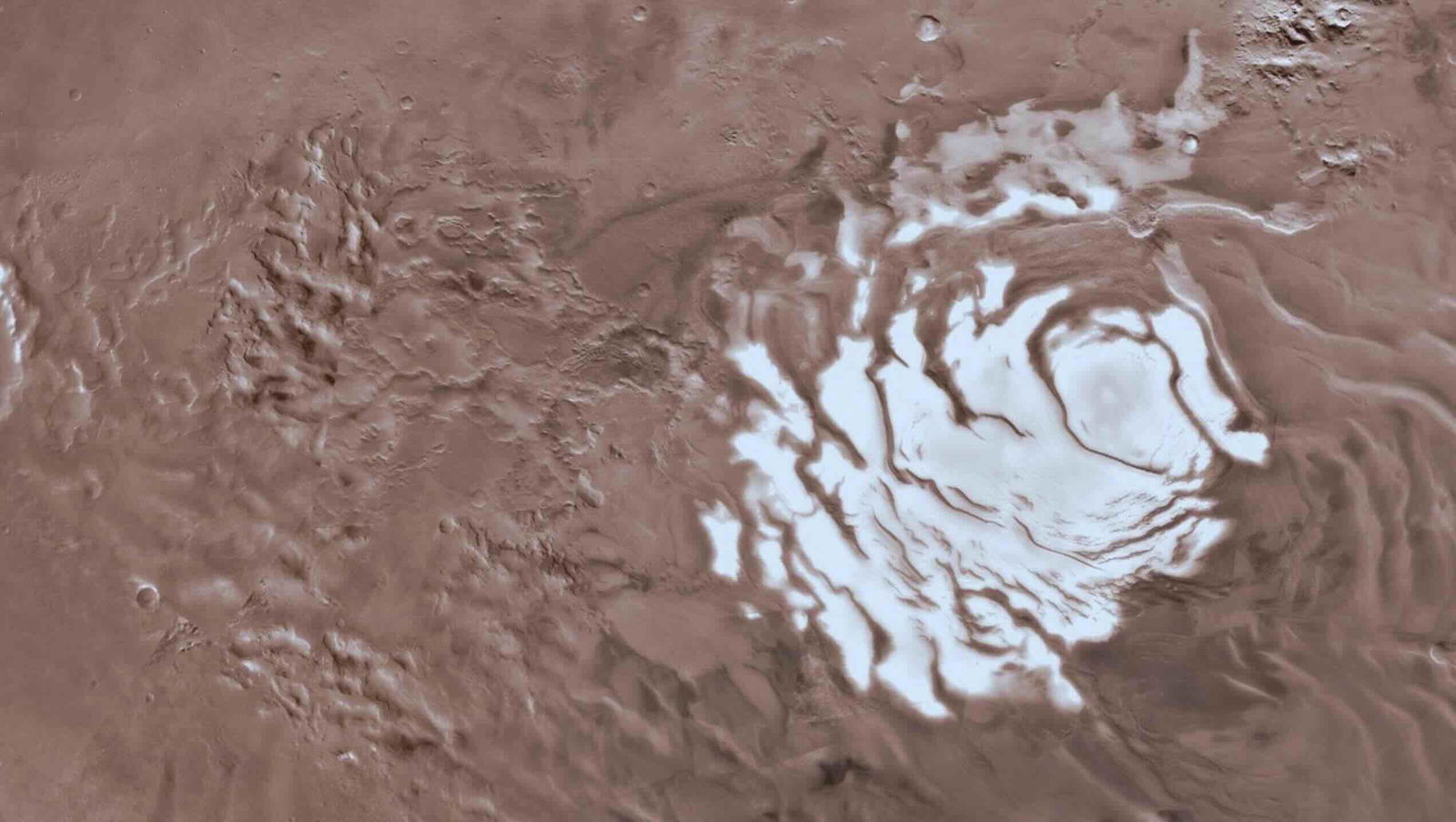Scientists have discovered that exposed ice on Mars could create conditions suitable for photosynthesis, suggesting the possibility that microbial life could thrive there despite the planet’s harsh environment and intense ultraviolet radiation.
The new findings reveal the potential for the existence of life on the Red Planet near its sub-latitudes, revealing that photosynthetic organisms may be uniquely suited for survival in certain icy exposed regions on the planet.
Unlike Earth, Mars is exposed to significantly more harmful ultraviolet (UV) radiation since it has no ozone layer, meaning that processes like photosynthesis, which plants and certain other organisms rely on to produce food with the help of sunlight, would be impossible on its surface under normal Martian conditions.
However, that may not be the case just a short distance below some of the Red Planet’s exposed icy surfaces. As little as a few centimeters of Martian surface ice could potentially offer enough shielding against radiation that photosynthetic organisms might be able to thrive.


Now, researchers are proposing that these so-called “radiatively habitable zones” could be promising areas to search for evidence of microbial life, where simple organisms may be able to survive in such areas, especially if small amounts of liquid water could be present there.
Photosynthesis and Ice on Mars
One way that Mars is similar to Earth is that it can facilitate deep penetration of solar radiation into the layers beneath its surface. On Earth this leads to the formation of subsurface environments with unique conditions for sustaining habitability, particularly since these areas are protected from exposure to harmful UV radiation.
Scientists are aware of organisms that can thrive in some of Earth’s icy subsurface regions by relying on photosynthetically active radiation to help generate energy, while still remaining protected from UV rays. In theory, the same could hold true on Mars also, and a likely candidate region for such conditions might be its mid-latitude ice exposures.


In such areas, sunlight would probably be capable of reaching depths required to support photosynthesis. By comparison, the level of UV exposure on the surface would be far too intense for any prospective Martian photosynthetic microbes to thrive.
Potential for Life in Martian Ice
Now, in a new study by researchers Aditya Khuller, Stephen Warren, Philip Christensen, and Gary Clow, the team conducted a radiative transfer analysis of icy regions on Mars, where they took varying ice conditions and factors like dust concentration into consideration.
Based on their models, mid-latitude regions on Mars contain ice that display very low amounts dust concentrations, which means there would be less material that could potentially block sunlight from penetrating them. Under these conditions, sunlight could penetrate up to several meters, raising the chances that liquid water could be present; a possibility that has been predicted in previous models of the Red Planet.
“The results presented here indicate that radiatively habitable zones exist within exposed mid-latitude ice on Mars at depths ranging from a few centimetres for ice with 0.01–0.1% dust, and up to a few metres within cleaner ice,” the team writes in their paper.
With the presence of liquid water as an added factor, such regions could indeed provide icy habitats for microbial life forms that rely on photosynthesis to sustain themselves.
Similarities to Earth’s Ice-Bound Microbes
A key aspect of the new research involves the basis for such possibilities having been derived from similar conditions on Earth. In the past, microbial life has been discovered in several seemingly unlikely places, which include cold, unforgiving glacial environments where most other lifeforms could never thrive.


One example of such life includes cyanobacteria that scientists have found living beneath translucent ice formations, which survive by capturing sunlight filtered through ice that protects them from the harsh conditions of their surrounding environment. Based on observations like those recently undertaken by Khuller, Warren, and their team, the Red Planet’s mid-latitude regions appear to represent areas very similar to those on Earth where cyanobacteria and other organisms have been discovered thriving.
If similar lifeforms exist on Mars, it is possible they could be scavenging nutrients from the surrounding Martian dust in such areas, while being protected from UV rays and other dangerous surface conditions, much like their Earthly cousins.
“Our analysis shows that despite higher surface ultraviolet radiation levels on Mars than on Earth, it is possible for terrestrial photosynthetic organisms to find locations within exposed ice on Mars with favorable solar radiative conditions,” the team writes in their paper.
Future Explorations for Life in Ice on Mars
Fundamentally, the team’s new paper suggests that the icy slopes of Mars’ mid latitudes, where melting is predicted to occur for a small portion of the Martian year, may be the most accessible locations for future searches that could reveal signs of life.
“If exposures of dusty mid-latitude Martian ice are melting below the surface for a fraction of the year as predicted by numerical models, then, like on Earth, microbes such as cyanobacteria could scavenge nutrients from the Martian dust mixed in with the ice and utilize the small amounts of melt whilst being in a radiatively favorable habitat below the surface,” the authors write.
Going forward, future missions to Mars that involve the use of robotic probes, and eventually crewed human missions, could focus on these promising ice exposures, providing a target location for future studies that boast the potential for significantly advancing our understanding of habitability on Mars, and ultimately whether life exists there.
The team’s new paper, “Potential for photosynthesis on Mars within snow and ice,” was published in Nature: Communications Earth & Environment on October 17, 2024.
Micah Hanks is the Editor-in-Chief and Co-Founder of The Debrief. He can be reached by email at micah@thedebrief.org. Follow his work at micahhanks.com and on X: @MicahHanks.

